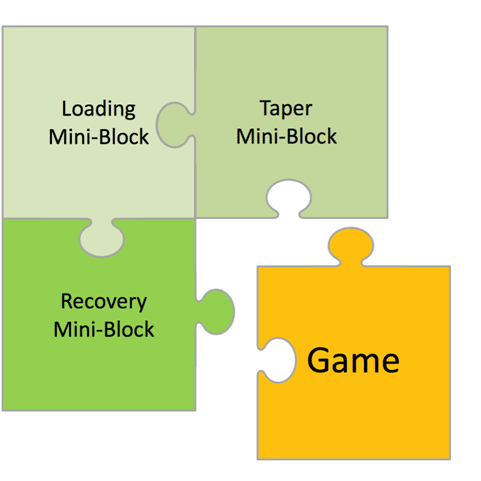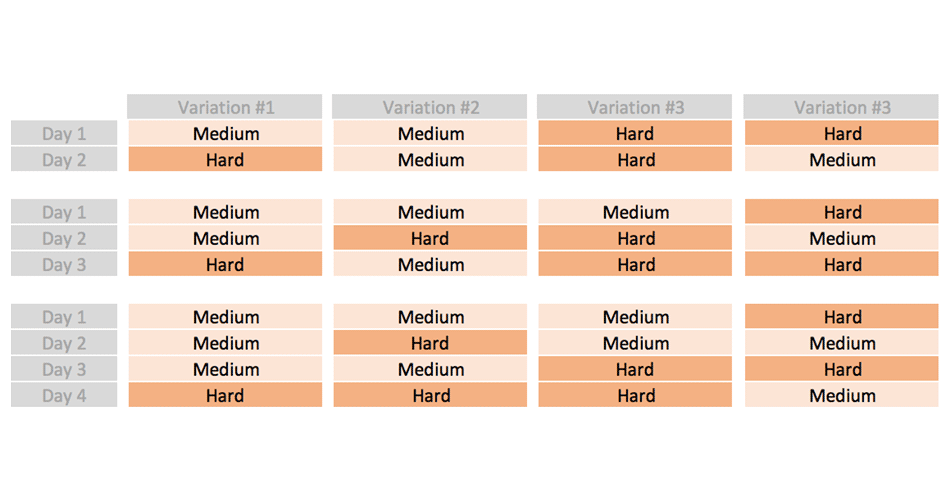Physical Preparation for Team Sports: Weekly Plans – Part 3
Previus Part:
Physical Preparation for Team Sports: Weekly Plans – Part 2
In this part of weekly plans, I am expanding on the concept of the “puzzles” and use that approach for flexible and agile planning of the training week. This approach represents simple model or a “jig” that you can use for micro-cycle of varying durations. I also describe the concepts of “planning from the game” and “planning to the game”.
As always I welcome any type of feedback. If you think something is not clear enough, need better explanation or more examples, please let me know.
Mini-Block: Puzzles
The dissection of the training week (microcycle) and distinction into recovery, loading and taper mini-blocks is of course artificial and represents a simple “jig” to be used to make decision making easier. In most cases we will use this simple model, but in some we need to realize it is only a model or a “jig” and we need to used something else, or modify it to suit our needs. Nothing wrong with that – it is even recommended (not to be the slave of our own models).
As mentioned, we can look at mini-blocks as puzzles we use to create a big picture (in this case microcycle). For that regard this concept is very helpful.

Figure 5. Mini-blocks as puzzles
We start by allocating days for recovery mini-block first, then taper mini-block and what is left we populated with loading mini-block. If there is more than 3-4 days for loading mini-block, we can use multiple loading mini-blocks and intercept them with 1-2 days of recovery mini-blocks (see the Figure X in Loading Mini-Blocks part).
Depending on the actual objective of the micro-cycle (training week), or the functional group (playing squad, reserves, non-travel, injured), mini-blocks can be be extended or shortened. For example, coach might decided that loading should be longer for reserves, or that playing squad need more time to prepare for the next game (i.e. longer taper mini-block), or that they might need extra rest (extending the recovery mini-block to 3 days and shortening the loading mini-block). It is quite flexible system.
Additionally, there is an order of planning within the mini-blocks themselves. For example, we plan the recovery mini-block going from the last game onward, and for the taper mini-block we go from the next game backwards. The loading mini-block can should/could be planned both ways.
To make this more formal we can use days from last game and days to next game notation, which makes adapting the principles to micro-cycles of different durations (see Weekly Plans for different cycle lengths) much easier.
On the following picture you can find the overall process for 7-days micro-cycle.

Figure 6. Order of planning
To make this more “puzzle-like” we can cut the mini-blocks and write the different variations for them only.
On the following picture you can find couple of variations for the recovery mini-block which should be planned first in the micro-cycle.

Figure 7. Recovery mini-block
Since planning of the recovery mini-block is done from the last game onward, the use of G+1, G+2, G+3 system is more “important”. This mean than when there is a “conflict” between “from the last game” and “to the next game” planning, you will put more weight on the “from the last game” planning for the recovery mini-block.
The next picture show couple of variations for the taper mini-block.











Responses